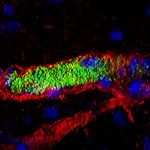Link to Pubmed [PMID] – 24459079
Proteomics 2014 May;14(10):1141-51
In pathogenic bacteria, posttranslationally modified proteins have been found to promote bacterial survival, replication, and evasion from the host immune system. In the human pathogen Neisseria meningitidis, the protein PilE (15-18 kDa) is the major building block of type IV pili, extracellular filamentous organelles that play a major role in mediating pathogenesis. Previous reports have shown that PilE can be expressed as a number of different proteoforms, each harboring its own set of PTMs and that specific proteoforms are key in promoting bacterial virulence. Efficient tools that allow complete PTM mapping of proteins involved in bacterial infection are therefore strongly needed. As we show in this study, a simple combination of mass profiling and bottom-up proteomics is fundamentally unable to achieve this goal when more than two proteoforms are present simultaneously. In a N. meningitidis strain isolated from a patient with meningitis, mass profiling revealed the presence of four major proteoforms of PilE, in a 1:1:1:1 ratio. Due to the complexity of the sample, a top-down approach was required to achieve complete PTM mapping for all four proteoforms, highlighting an unprecedented extent of glycosylation. Top-down MS therefore appears to be a promising tool for the analysis of highly posttranslationally modified proteins involved in bacterial virulence.

